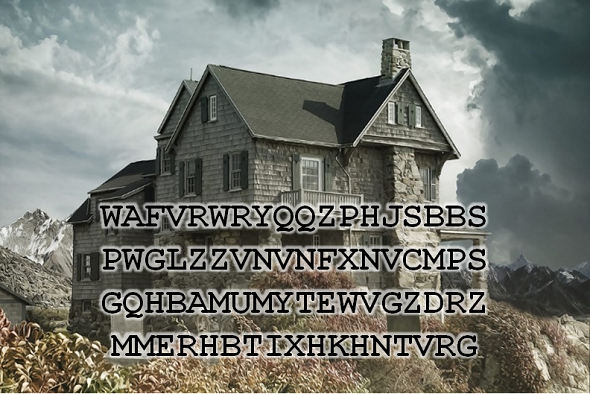The Vernam cipher is mentioned in dozens of cryptography books. It is simple and more secure than most other basic encryption methods. Can you solve the three Vernam challenges I am going to introduce today?
Everybody interested in historical crypto systems knows the Vernam cipher. The Vernam cipher is a special case of the Vigenère cipher – if the key used for a Vigenère encryption is as long as the message itself, it’s a Vernam encryption.
Vernam: simple but hard to break
The Vernam cipher works exactly like the One Time Pad, with the only difference that a One Time Pad key is a sequence of random letters, while the Vernam key is a phrase (usually taken from a book or newspaper).
As an example, let’s encrypt the famous Neil Armstrong quote “That’s one small step for a man, one giant leap for mankind”. As key we choose the phrase “We are one nation, we are one people, and our time for change has come” (it’s Barack Obama quote). Applying a Vernam encryption means that we add the key to the cleartext (A=0, B=1, C=2; if the result is greater than 25, we substract 26):
THATSONESMALLSTEPFORAMANONEGIANTLEAPFORMANKIND
WEAREONENATIONWEAREONEPEOPLEANDOURTIMEFORCHANGEHASCOME
-------------------------------------------------
PLAKWCAIFMTTZFPIPWSFNQPRCCPKINQHFVTXRSWARPRIAJ
The ciphertext is “PLAKWC…”. As you see, we didn’t need the last eight letters of the key.
The Vernam cipher is mentioned in numerous crypto books. It can be regarded as a compromise between a One Time Pad (unbreakable) and a Vigenère cipher (can be easily broken today).
It is clear that a Vernam cipher can be broken, but it’s not trivial. One approach is to guess a word in the cleartext or the key. If, say, the word MONEY is guessed correctly in the key and the resulting cleartext fragment is EETIN, we can conclude that the word MEETING appears in the cleartext. This provides us two more letters in the keyword, say EMONEYI, which lets us guess that THE stands before MONEY. We now have two additional key letters, which provides us two more cleartext letters. If we are lucky, we can reconstruct the whole cleartext this way.
In 2008, German crypto expert Tobias Schrödel published a hitherto unknown Vigenère cipher breaking method in Cryptologia. This attack is based on eliminating rare letter combinations in both the cleartext and the keyword. It requires a computer program that implements it (in fact, it is implemented in CrypTool 1). Tobias’ method is particularly helpful if the message is short compared to the keyword (e.g., if a 15 letter cleartext is encrypted with a seven-letter keyword). However, it requires that the keyword is a real word and not a random letter sequence.
It seems possible that Tobias’ method can also be used for attacking a Vernam cipher. His paper doesn’t mention this, but it’s certainly worth a try.
Three challenges
Though the Vernam cipher is well known among crypto experts, it has never been in wide-spread use. In fact, I don’t know a single case where a Vernam cipher was used in practice. In addition, there is very little literature about breaking a Vernam cipher. For this reason, I have created three Vernam challenges of different length. I am going to introduce them below. Of course, a shorter message is harder to break than a longer one.
All cleartexts and keyphrases are taken from the English language. I used CrypTool 1 to carry out the encryptions. Here are the challenges:
Challenge 1
WAFVRWRYQQZPHJSBBSPWGLZZVNVNFXNVCMPSGQHBAMUMYTEWVGZDRZMMERHBTIXHKHNTVRG
Challenge 2
MYXNKBFETHMVUIBLVHTEMOELVKKGMVV
Challenge 3
YADPNBXGWN
Can you solve any of these challenges? If so, please leave a comment and tell us the codebreaking method you have used.
Follow @KlausSchmeh
Further reading: An unsolved cryptogram from 1834
Linkedin: https://www.linkedin.com/groups/13501820
Facebook: https://www.facebook.com/groups/763282653806483/



Kommentare (27)